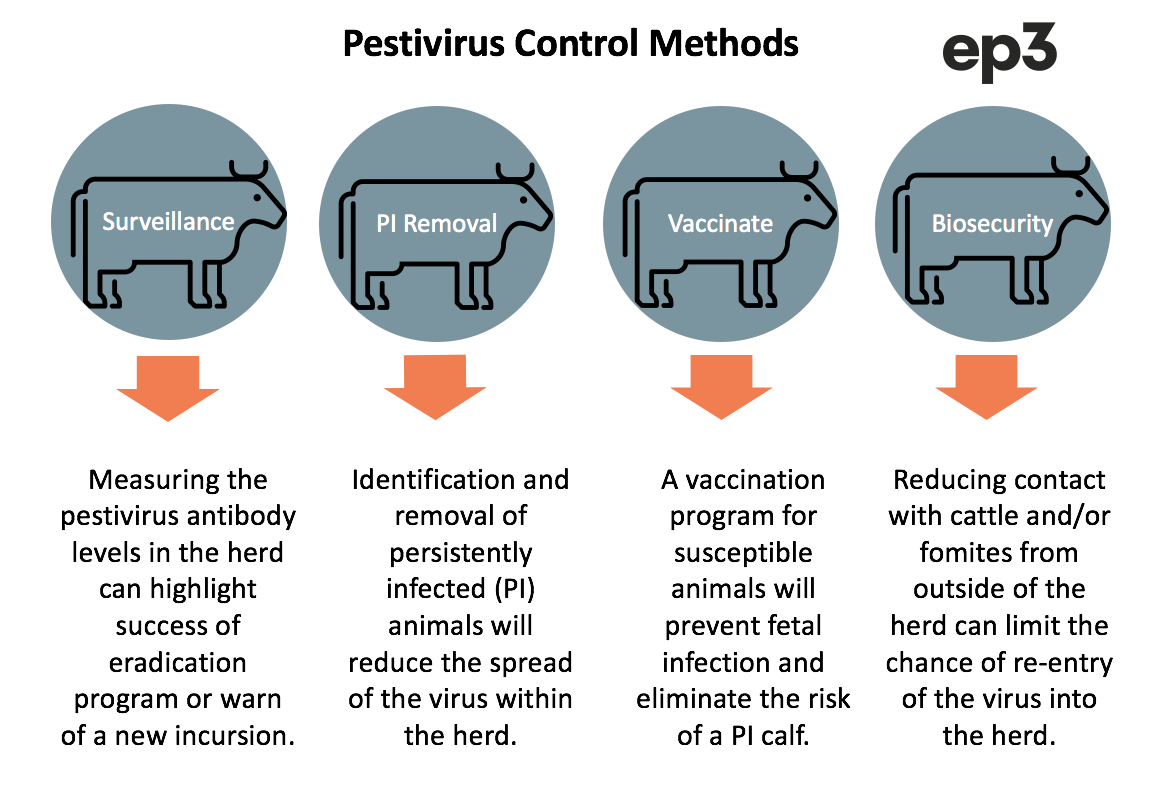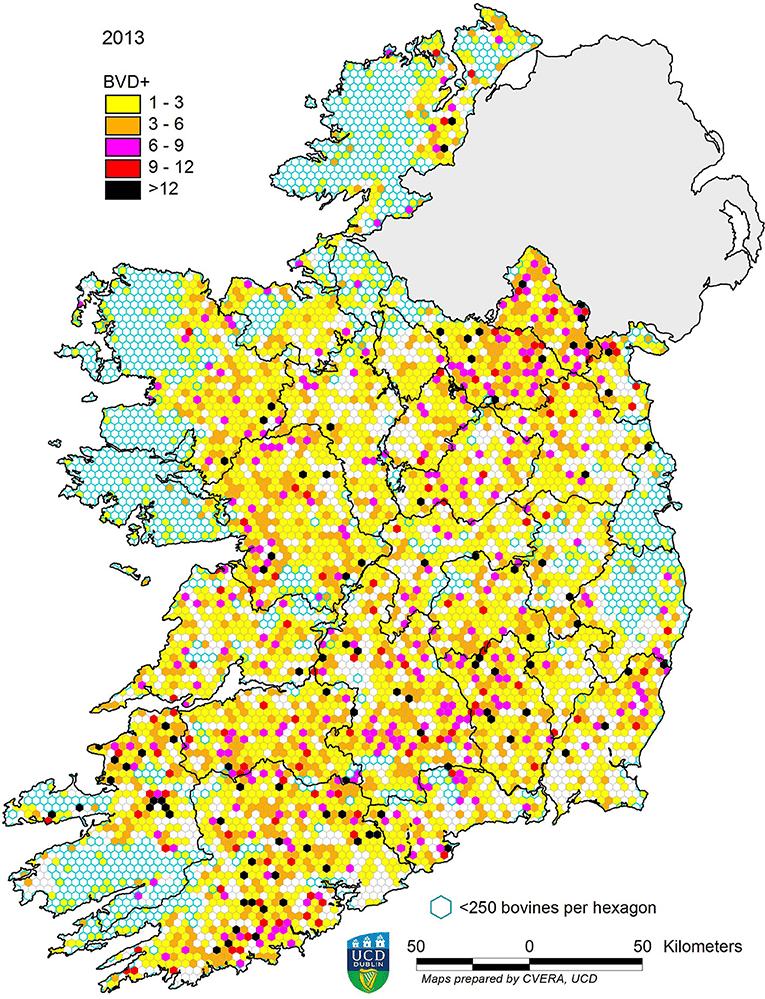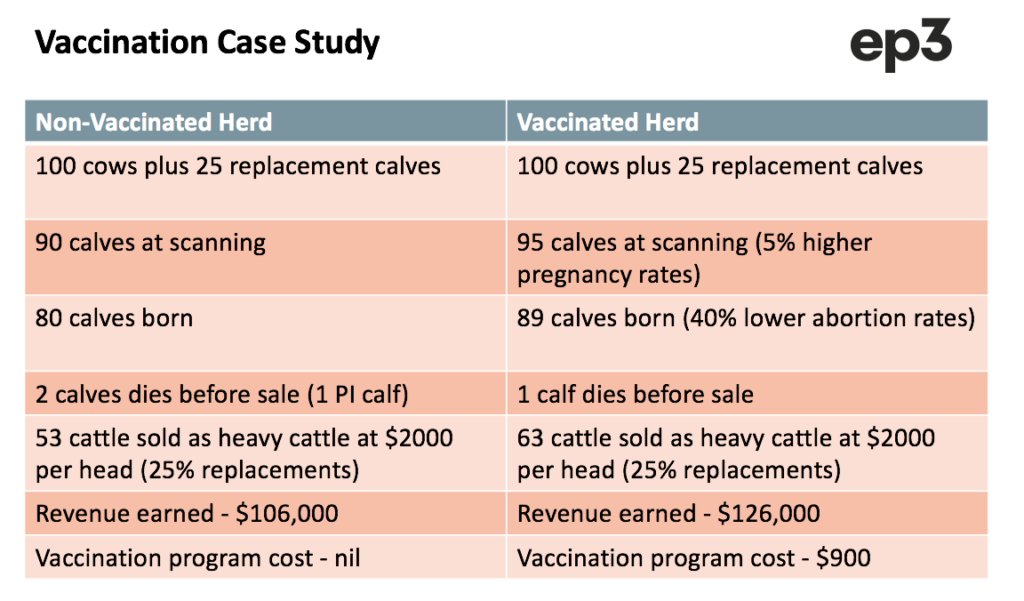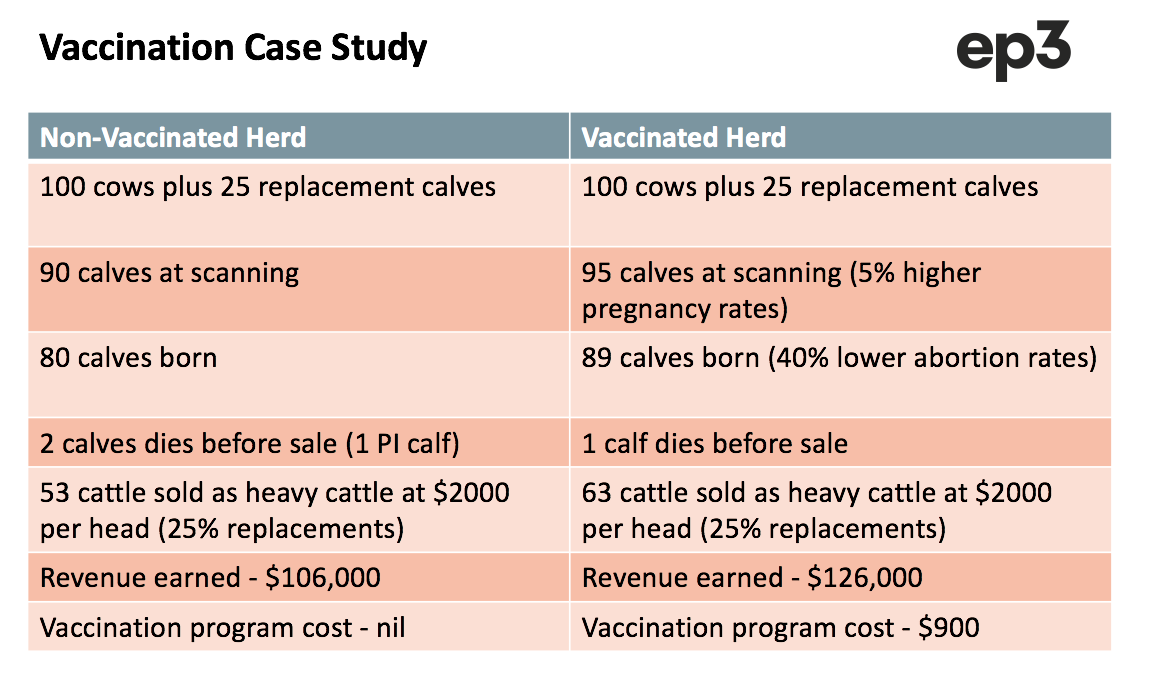Showing the way

The Snapshot
- Active pestivirus management has been shown to improve the productivity of cattle in a variety of enterprises.
- Systematic pestivirus management programs are becoming more common, particularly within beef cattle and dairy producing countries in the EU, and many of the programs implemented have highlighted that the benefits of the program have outweighed the cost of implementation.
- An uncoordinated and non-systematic approach to pestivirus management in Australia has seen limited change in disease prevalence in nearly fifty years. This is despite an increased knowledge of the disease and the introduction of a suitable and effective vaccine.
- The impact of pestivirus can be reduced through the adoption of management practices such as surveillance, PI removal, vaccination and the introduction of biosecurity procedures that reduce the spread of the disease across the cattle population.
- Pestivirus vaccination programs have been shown to improve cattle reproductive performance in herds with active infection by improving pregnancy rates by 5%, reducing abortion rates by 40% and delivering an 85% reduction in foetal infection rates.
The Detail
Episode3 (EP3), with the support of Zoetis Australia, have been investigating the impact of Bovine Viral Diarrhoea Virus (BVDV), also known as pestivirus, on the Australian cattle sector. This piece is the final instalment in a series of articles on pestivirus that focused upon:
- What the virus is, how widely it is distributed and how it is spread (Published 14th October)
- The impact of the virus on cattle, types of infected animals, implications for breeding and current control measures (Published 28th October)
- The economic cost of the virus, impacts to the beef feedlot and dairy sector (Published 13th December)
- The international response to the virus and the consideration of a control/eradication program for Australia
Management of Pestivirus
Pestivirus management strategies at a state-based or national level can be described as systematic and non-systematic.
A systematic control strategy includes the removal of persistently infected (PI) animals from infected herds, biosecurity measures aimed at preventing the re-introduction of the virus, and surveillance methods to monitor the progress of the management program and detect pestivirus incursion within susceptible herds. A systematic approach can also include the implementation of a co-ordinated vaccination programme, either at a regional or national level.
Non-systematic approaches omit one or more of the management methods and are implemented on an individual herd basis without any simultaneous co-ordinated programs within other herds.
Systematic pestivirus management programs are becoming more common, particularly within beef cattle and dairy producing countries in the European Union (EU), and many of the programs implemented have highlighted that the benefits of the program have outweighed the cost of implementation. Within the EU, countries that neglect to put pestivirus management programmes in place are likely to be at a competitive disadvantage when trading and competing with pestivirus free countries.
One of the earliest systematic control programs was implemented in the early 1990s in Denmark, Finland, Norway, Sweden and the Shetland Islands. The eradication of pestivirus within all of these countries was confirmed approximately a decade after implementation and was known as the Scandinavian model.
In contrast, management of pestivirus has been shown to vary considerably with non-systematic approaches and no individualised control program has been shown to be successful in controlling disease over the long term, thus far. The Australian experience supports this observation where there has been limited change in disease prevalence in nearly fifty years. This is despite an increased knowledge of the disease and the introduction of a suitable vaccine.
Recent offshore experience
Norway – In 2013 a collaborative project was undertaken in Norway which predominantly involved testing and culling. The eradication costs were calculated at EUR5.7 million over a ten-year period with an estimated benefit between 5.4 – 21.6 million EUR per year. Norwegian cattle owners paid 43% of the program costs. Freedom from pestivirus has been demonstrated by a subsequent surveillance program. The eradication program has been shown to generate an economic gain for Norway.
Ireland – A 2012 study involving a test, cull and vaccination program was examined in Ireland. An economic benefit of eradication was demonstrated as a result of this study. The benefit exceeded the costs by a factor of 14 in dairy herds and a factor of 5 in cow-calf herds. The total eradication costs were estimated at EUR 55 million. The payback period was calculated to be 1.2 (cow/calf) and 0.4 years (dairy). A mandatory national Irish pestivirus eradication programme, coordinated by Animal Health Ireland, commenced in 2013 and has been successful in reducing the prevalence of the virus.
Figure 2. Reduction of pestivirus prevalence in Ireland
Switzerland – A program involving test, cull and biosecurity measures was introduced in 2008. A 2012 study calculated the total eradication costs at EUR62 million, and benefits of the program were estimated to be EUR120 million, measured over a decade. The break-even point was reached in year 5. The Swiss programme is centrally coordinated by the Federal Veterinary Office and administered locally by regional governments.
Germany – In 2011 a mandatory pestivirus control program was introduced to all German states involving a regime of testing, culling and biosecurity measures on cattle trading. The German legislation requires all persistently infected (PI) cattle be destroyed within one week of detection. The movement of PI calves is also prohibited. Only animals that have been tested as pestivirus free can be traded, apart from animals that are going to slaughter.
United Kingdom (Scotland) – Pestivirus was successfully eradicated from the Shetland Islands in Scotland during the 1990s, as part of the Scandinavian eradication model. Unfortunately, it was reintroduced to the islands through purchase of a PI animal, highlighting the need for a biosecurity/monitoring element to such eradication programs.
A 2009 study of the Scottish eradication program that involved vaccination, test, cull and biosecurity measure demonstrated a net benefit measured at EUR 49.9 million over a ten-year period. Analysis of the Scottish eradication program was shown to produced overall a net economic surplus and in 2010 the Scottish government began a program to eradicate pestivirus.
New Zealand – A 2008 study involving a program to test, cull and vaccinate in New Zealand demonstrated a return on investment of 123% over a ten-year period. The study revealed that over the long term, all implemented prevention and mitigation activities appeared to be cheaper than living with pestivirus infection.
In 2017 the New Zealand Ministry for Primary industries co-funded a pestivirus research project with industry to evaluate the cost effectiveness of a pestivirus control program. The findings of the project highlighted that pestivirus is costing the sector $NZ150 million per annum in production losses and could be eradicated within a decade using a systematic and co-ordinated test, cull and vaccination program.
A missed opportunity for Australia
The experience in managing pestivirus offshore highlights several key messages for the Australian beef and dairy industry. The impact of pestivirus can be reduced through the adoption of management practices such as surveillance, PI removal, vaccination and the introduction of biosecurity procedures that reduce the spread of the disease across the cattle population.
These measures are directed at maximising herd biosecurity and include the testing of replacement stock, ensuring that breeders are immune or vaccinated before joining and preventing the mixing of cattle with unknown pestivirus status during the pregnancy phase. Vaccination is likely to be cost effective in most breeding herds when there is potential for the introduction of pestivirus to a susceptible herd. Additional attention is required when cattle are agisted or when the stock management/transportation procedure is altered.
A 2014 US study on the effectiveness of a pestivirus vaccination program undertaken by researchers from Auburn University, Alabama identified the following benefits that were attributed to improved reproductive performance due to the use of a vaccine:
- Pregnancy rates improved by 5%
- Abortion rates declined by 40%
- Foetal infection rates (incidence of PI calf being born) reduced by 85%
A simple example of the reproductive benefits to using a vaccination program based on the outcomes highlighted by the Auburn University study for a beef breeding herd is outlined below:
Widespread adoption of pestivirus control methods within the Australian cattle sector could see the prevalence and negative impact of the virus substantially reduced in the short term.
The benefits to the industry will only be realised once a more proactive approach is undertaken.





